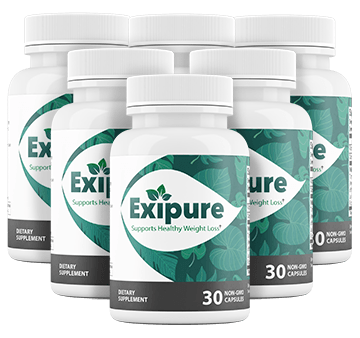How To Make Coffee Flower Tea and Its Benefits
Ironically, feeling torn between the 2 most magical morning drinks—espresso and tea—is exhausting. Instead of letting the ache of indecision (ahem) steep, brew your self the very best of each worlds: espresso flower tea.
Whether you’re making an attempt to chop again on caffeine consumption otherwise you merely need one thing extra subdued in taste, espresso flower tea could grow to be your new drink of alternative.
What is espresso flower tea?
According to Jordan Michelman and Zachary Carlsen’s new guide, But First, Coffee, turning espresso flowers—that are “aromatic and distinct, with notes of jasmine and honeysuckle” and develop on espresso bushes—into tea is likely one of the smartest methods to cut back your espresso consumption-related waste.
“Like cascara [a beverage made from coffee cherry husks], coffee flower water uses a commonly discarded part of the coffee plant,” Michelman and Carlsen say. “A kind of herbal tisane made using hot water and coffee flowers has been known for centuries in coffee-growing communities.” In order to organize the tea, espresso flowers are first sun-dried on raised beds. Then, you’ll be able to steep them as you’d tea or natural tisane.
The health advantages of consuming espresso flower tea are bountiful, BTW
According to Lauren Manaker, MS, RDN, LD, CLEC, CPT, a registered dietitian based mostly in Charleston, consuming espresso flower tea has some advantages. “It’s rich in antioxidants such as flavonoids, it helps combat oxidative stress, and reduces inflammation in the body,” Manaker says. “The tea also can provide a calming effect, reducing anxiety and promoting relaxation. Furthermore, its antibacterial properties can aid in oral health.”
Despite these potential advantages, Manaker says it’s all the time advisable to eat it sparsely and seek the advice of a healthcare skilled for personalised recommendation on how you can introduce it to your diet.
“[Coffee flower tea] is rich in antioxidants such as flavonoids, which helps combat oxidative stress and reduce inflammation in the body. The tea also can provide a calming effect, reducing anxiety and promoting relaxation.” —Lauren Manaker, MS, RD
Coffee flower tea vs. common ol’ espresso
Although they could sound like closely-related siblings, they’re extra akin to shut cousins. “While coffee flower tea and traditional coffee come from the same plant, they differ significantly in terms of caffeine content, flavor, and health benefits,” Manaker says. For starters, natural drink received’t set off caffeine-induced jitters. “Unlike regular coffee, which is high in caffeine, the tea contains little to no caffeine, making it an excellent option for those looking to reduce their caffeine intake,” she says.
“Unlike regular coffee, which is high in caffeine, the tea contains little to no caffeine, making it an excellent option for those looking to reduce their caffeine intake.”
Then, when it comes to taste, the tea is way more subdued than, say, a double shot of darkish roast brew. “The flavor profile of the two also varies. Coffee flower tea is noted for its light, floral taste, in contrast to the robust, full-bodied flavor of coffee,” Manaker says.
Finally, the health advantages are totally different between the 2, and the tea could even possess just a few extra engaging qualities than its counterpart. “In terms of health benefits, both beverages are rich in antioxidants, but coffee flower tea is said to offer a broader range of benefits, such as improving blood sugar regulation and possessing antibacterial properties, but more data is needed to confirm this,” Manaker says.
Who shouldn’t drink espresso flower tea?
Before introducing this beverage into your morning ritual, it’s vital to notice that it might not be appropriate for everybody. “People with an allergy to the coffee plant could potentially react to coffee flower tea. Plus, those with a sensitivity to plants in the Rubiaceae family should abstain due to the risk of cross-reactivity,” Manaker says. She additionally cautions that pregnant and breastfeeding individuals needs to be cautious and seek the advice of with a healthcare skilled earlier than consuming the tea, as there’s restricted analysis on the tea’s results in these cases. “Individuals with chronic health conditions or those currently taking any medication should seek medical advice before introducing coffee flower tea into their diet, as it could interact with certain drugs or exacerbate existing health issues.”

How to make espresso flower tea recipe
Yields 1 medium pot of tea
Ingredients
4 grams (1 teaspoon) dried coffee flowers
220 milliliters (not fairly 1 cup) water heated to 176°F (80°C), which is simply earlier than boiling
1. Start together with your favourite teapot, glass server, or sizable brewing vessel. A small Chemex works nice right here if that’s your desire.
2. Pour the new water over the espresso flowers and begin a timer set for 2 minutes. Allow the flowers to steep the total period of time, then decant the brewed tea out of your vessel—don’t over-steep the flowers.
Excerpted with permission from But First, Coffee by Jordan Michelman and Zachary Carlsen © 2023. Published by Union Square & Co. Photography © Zachary Carlsen
A registered dietitian shares the advantages of consuming common ol’ espresso:
Our editors independently choose these merchandise. Making a purchase order by way of our hyperlinks could earn Well+Good a fee.
Source link






